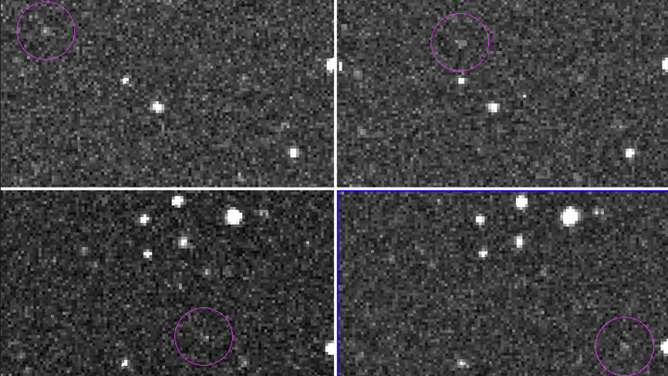Fireball spotted over Philippines after asteroid detected crashing into Earth’s atmosphere
Planetary experts estimate that only 500 meteorites reach Earth’s surface each year, with fewer than a dozen that are ever recovered. The small meteoroid was never a threat to the world’s population.
Watch: Video shows night sky illuminated as asteroid burns over Philippines
A dramatic video shared from the Philippines shows the night sky illuminated as a small asteroid burns up while entering the Earth's atmosphere.
LUZON ISLAND, Philippines – A massive fireball illuminated the sky over the northern Philippines Wednesday but, unlike during previous encounters with meteorites, the event was widely expected by astronomers.
NASA’s Catalina Sky Survey originally spotted the approximately 3-foot-wide asteroid earlier in the morning and alerted other agencies about the impending collision.
Due to its relatively small size, the world’s population was never considered at risk, as the rocky and possibly metallic object was expected to completely disintegrate in the atmosphere.
Watch: Video shows asteroid blasting across night sky above Philippines
A video shared from the Philippines shows a bright asteroid burning through the atmosphere on Sept. 5, 2024.
Photos and videos posted on social media by witnesses in the Philippines showed what appeared to be a bright green hue streaking from west to east across the evening sky.
The asteroid, named ‘2024 RW1,’ is reported to be only the ninth instance where humans have detected an asteroid before impact.

A small meteoroid was detected before striking Earth's atmosphere
(Catalina Sky Survey / NASA)
WATCH: MASSIVE FIREBALL SPOTTED OVER NORTH CAROLINA, MUCH OF APPALACHIA
The European Space Agency said an event earlier this year over Europe was about the same size as Wednesday’s asteroid as hundreds witnessed the sky west of Berlin illuminate upon its trek through the atmosphere.
"As humankind’s ability to detect smaller space objects continues to improve, this number is likely to rise exponentially in the coming years," the ESA said after January’s event.
The agency’s planetary defense experts believe that an asteroid about three feet in diameter impacts Earth approximately once every two weeks, while a mass closer to 300 feet in diameter occurs only once every 10,000 years.
The largest known asteroid impact in recorded human history is the Tunguska event, which occurred in 1908.
According to NASA, the 160-to 200-foot-wide asteroid exploded above southern Russia, knocking over millions of trees and causing massive wildfires.
Due to the region’s remote location, scientists did not report discovering the event until 1927.

Asteroid impact chart
(ESA Planetary Defense / FOX Weather)
MASSIVE FIREBALL LIGHTS UP NIGHT SKY ACROSS NEARLY A DOZEN STATES
Wednesday’s fireball over Southeast Asia was not the only instance of space debris observed in the sky over the past week.
On Friday, residents in nearly a dozen U.S. states reported hearing a sonic boom and seeing a fireball as it streaked through the night sky at an astonishing 31,300 miles per hour.
Planetary experts estimate that only about 500 meteorites reach Earth’s surface each year, with fewer than a dozen that are recovered.
Videos show fireball in sky over North Carolina
Cameras across North Carolina and Tennessee captured a streak of bright light across the night sky early Friday. The American Meteor Society received around 140 reports of people both seeing and hearing the event.


